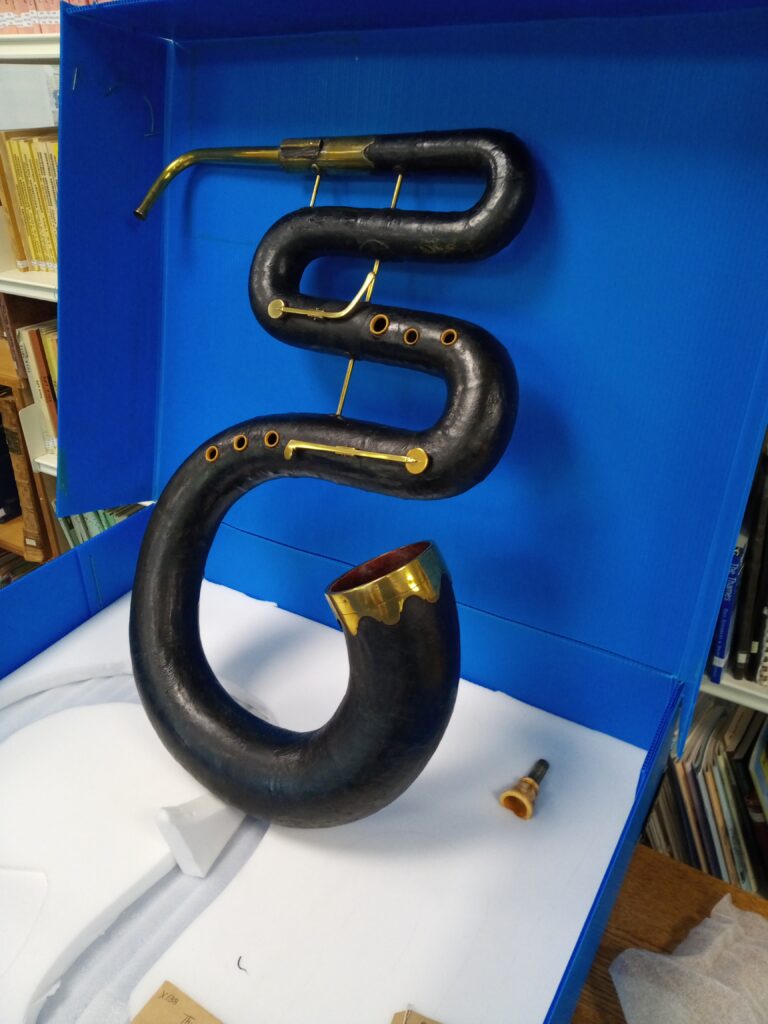This talk lasts just over seven minutes, (not the 34 minutes listed – most of the tape is blank)
Jack starts by outlining the history and remit of the Wychwoods Local History Society (founded 1981) which includes reading and copying old documents, undertaking field projects mapping the local area, recording monuments and field-walking to uncover history in recently ploughed fields.
At the time of recording, the Society was planning to record the contents of all local churches, starting with St Mary’s Shipton-under-Wychwood (cataloguing woodwork, metalwork, memorials, glass, textiles and miscellaneous).
Jack and his wife were responsible for recording the miscellaneous items in the church which, he explains, means the clock, the organ and any other musical instruments, paintings, lighting and heating and tiles.
In this talk, Jack describes the ‘any other musical instrument’ which was found in 1978 hanging on the wall of the north aisle. Called the Serpent, it is a wind instrument made of wood, covered in leather. Stretched out, it would extend to about four feet in length but it is folded in a zig-zag shape to resemble a fat snake.

These Serpents were quite common in early church services and in military bands and would be played in small church bands, probably from a gallery. Organs were expensive and Shipton’s first organ was not installed until 1841 (probably in the space that the gallery had previously occupied).
It is probable that Shipton’s Serpent had hung on the church wall from 1841 until 1978 and, like any wooden object in an unheated space, was in a poor condition. At the time of recording, Jack tells us that the Serpent was therefore handed to the County Museum in Woodstock for safe-keeping. Subsequently a local benefactor paid for it to be restored to a playable condition.
[ The instrument is now stored at the Oxfordshire Museums Resource Centre]
CHB Nov 2023

